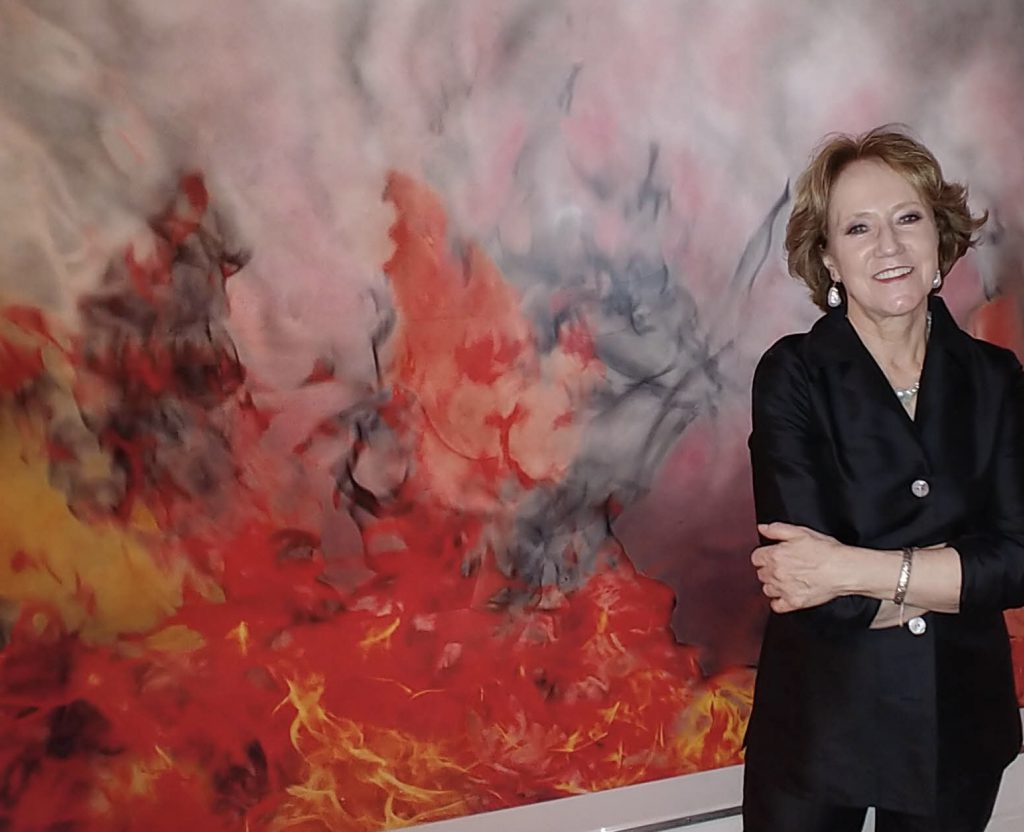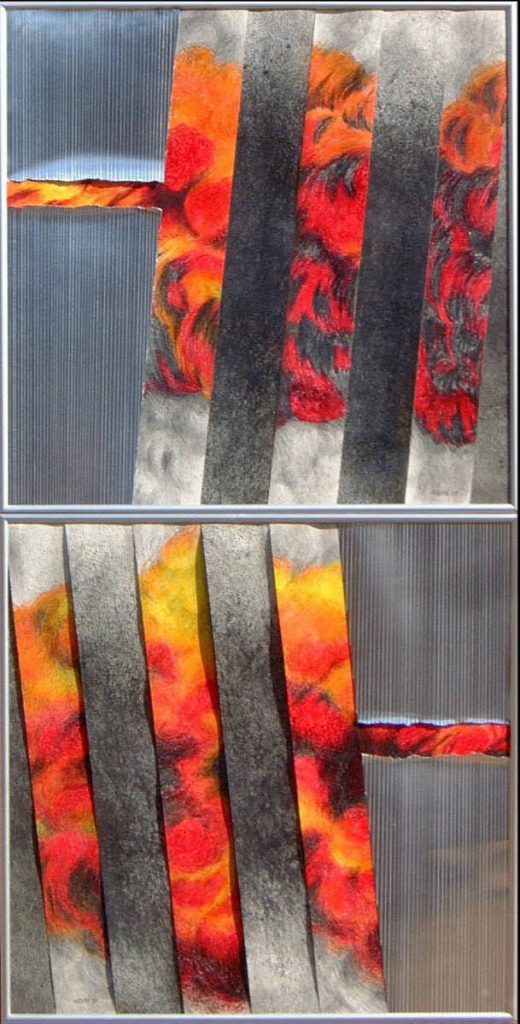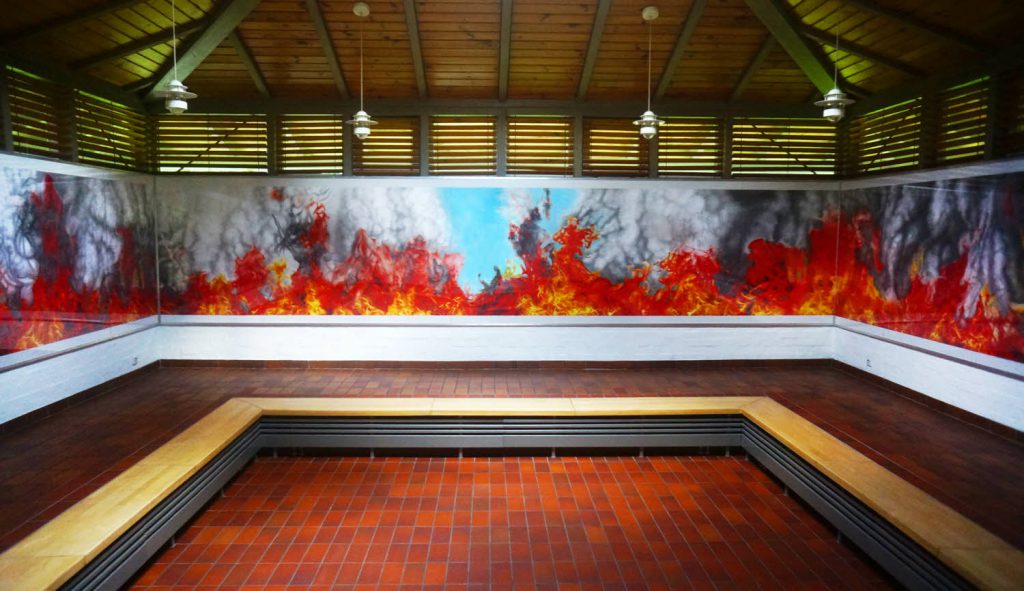Anna VanMatre
ArtTour International Magazine Presents Artist of the Week, 2020
Anna VanMatre is a dominant figure in high definition fine arts, multi-layered photography, and synthetic three-dimensional paper paintings, genuinely larger-than-life. She exhibits unique drawing strokes, with multi-panel and interchangeable starting points. Her philosophical lectures have also been a valuable addition to collaborative arts, as she brings metamorphism into life with an artistic language signature to her very own.
What are the core and fundamental themes and concepts of your art?
“Nature is my biggest inspiration. I try to present paintings that definitely focus on the environment. This is my artistic mission. I had, for example, a whole series of paintings about the Chernobyl disaster: gigantic, black-and-white, often 3D panels, made in graphite. Sometimes
I feel this is a voice crying in the wilderness, but maybe, someone will hear it eventually. I also made a series about the 9/11 World Trade Center horror. I conveyed the essence of this tragedy in vertical diptychs, which are as terrifying as visually beautiful. I wanted to freeze it in time.
There is a certain kind of dichotomy in my art: I show the beauty of Nature, but sometimes, this beauty is cruel—the eruption of a volcano is beautiful, but at the same time, it destroys whole communities and kills people.
I made a series called DeNatural Disaster after the US entered the war with Iraq. It was a great shock for me—we are in the 21st century, and we have a war? I was so outraged while creating these paintings. I was completely furious! This was an artistic voice in me saying, “Stop! Absolutely no!” When you look at those paintings, you don’t know whether this is the creation of Nature or the destructive force of a man who interferes with Nature, whether this is an explosion of a volcano and red lava or the battlefield and bloodshed.”
Have you experienced any significant changes in your work this last year?
“I wanted my exhibition at Auschwitz in 2018 “To Those Who Warn…”, dedicated to Jan Karski, to be a powerful message. The exhibition center is next to the Auschwitz Memorial and Museum, which triggers fundamental questions about justice, love, and truth. It was in this place that civilization crumbled; it was here that the whole system of values collapsed. My intention was to stimulate contemplation and evoke feelings of empathy. In my opinion, such intense art is the best lesson, especially for the young generation—they often know very little, or nothing or they don’t want to know about what happened in this place: one of the biggest genocides in human history. I tried to create the mood of fear, terror, horror, and annihilation – life between fear and death. At the same time, I wanted to show the ephemeral and fragile Nature of human existence. If one can comprehend the suffering of those people and relate it to one’s own feelings, such things will never happen again because nobody would want to be in such a situation.
I created the U-shaped installation on three walls: left, central, and right. The story starts from the left side: this is the arrival at the camp: the night is dark; people are getting off the train, bewildered and shocked. It was horrible – people were disoriented and utterly unaware of what was going to happen. These people, who came here from the “normal” world, suddenly found themselves in a nightmare they had never expected and could not have predicted. Everyone had expected the worst, but no one had expected the unimaginable. I tried to draw all of this: the smoke, the flames, the ashes. People were trapped, with no way out. The whole narrative is told through the fire and smoke, which sometimes is black, sometimes grey and foggy, sometimes flaming red, obscuring the view. In the middle panel, there is a small element of a beautiful blue sky. It is a symbol of the only connection to the outside world, to the free world, because while looking at the sky, one could not see the barbed wire or the flames and smoke.
Besides this small fragment of the blue sky, smoke and fire are everywhere. These elements are never-ending because there were no breaks, and the size of the installation – 73 feet wide – emphasizes this. We move to the right panel, which is probably the most dramatic one – it is the essence of horror. The triptych ends with the inferno – the smoke turns an unusual reddish-purple that I have never painted before. Even though a very small group of people did survive, there would never be normalcy in their lives or their loved ones.”
Where are you from, and how has that influenced your art?
“Growing up and being educated in Poland, of course, immersed me in a specific history like I was describing. But in a more general sense, I was exposed to a European approach to art. When I moved to the US, my eyes were opened to a much different culture. I think the blend, indeed, the conflict of these two influences has shaped my artistic view.”




